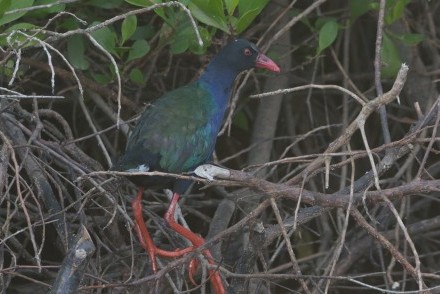TikaWeeks #42/2024: Sri Lanka update
Posted by John on 18th October 2024

For all you birding enthusiasts, a remarkable discovery was made in Sri Lanka’s northern province back in March with the first ever sighting of an Allen’s Gallinule on the island. A research team led by Kasun Gonagala observed a unique and unexpected visitor to the region: Allen's Gallinule (Porphyrio alleni), a species that had never before been recorded in Sri Lanka or Asia. The sighting took place in a swampy forest rich in mangroves, with the bird walking on lily pads in a well-vegetated wetland.
Allen's Gallinule (or Allen’s Kitala as it is known in Sri Lanka) is typically found in sub-Saharan Africa, with its breeding range extending from Senegal and Gambia to southern Ethiopia, Namibia, and eastern South Africa. The bird is known to inhabit swamps and lakes, particularly in wetlands with dense vegetation, and can be found at altitudes of up to 1900 metres. This species is primarily an intra-African migratory bird, exhibiting complex seasonal movement patterns. Some populations remain in wetlands throughout the year, while others migrate, moving northward during the rainy season.
The observed bird (see image) was identified as a brightly coloured male, featuring a mix of purple, green, and bronze plumage. It had a short red beak, red feet, and long toes adapted for walking on aquatic vegetation. The upper parts of the bird, including the wings, were a striking bronze-green, while its underparts were covered with white feathers. A distinctive pale blue frontal lobe added to its vibrant appearance.
Although Allen's Kitala is primarily an African species, it has been reported as a vagrant in various parts of Europe, including the UK, Cyprus, and several other European countries. This recent sighting in Sri Lanka serves as a significant example of the bird’s ability to stray far beyond its typical range, highlighting the phenomenon of vagrancy in bird species.
This finding adds to the rich biodiversity of Sri Lanka and underscores the importance of continuous avian research and conservation efforts in the region.
Thanks to our colleagues at Eco Team Sri Lanka for sharing this phenomenal news with us.
Categories: News, Sri Lanka, Wildlife
« All articles




